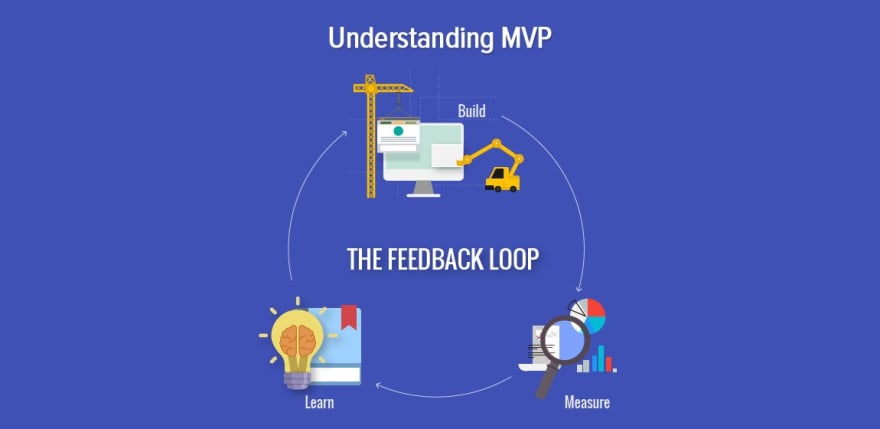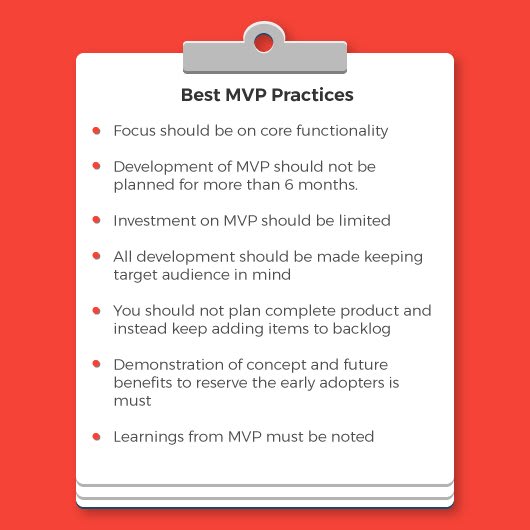You may be too excited and confident about your "bright" idea for developing a web or mobile application. You also have the capital to materialize your idea. But do you know whether your idea or product will be capable enough in solving the users' problems?
The age where investors would commit their money without validation is gone by. The initial market and customer testing is a must for all projects and investments now. There is no way you can proceed in your project without calculating or evaluating the long-term success of a product. Also, this prediction has no rooms for guesswork or a random analysis.
Now the next question ruling your mind would be - how to go about this validation and customer testing process? This is where the concept of Minimum Viable Product (MVP) comes into play. Building a MVP is the best first step for any stakeholder in a project.
MVP enables you to conduct a feasibility analysis for your project by depicting the concept, sharing the idea with your audience, gaining early feedback and getting vision for full-fledged product.
To utilize this product/ process best, it is pertinent for you to first understand the basic concept. Once you get a fair understanding on the purpose and significance of MVP, you will also find information on common misconceptions about MVP and prevalent mistakes in building MVP, in the subsequent sections of this blog.
What is a Minimum Viable Product (MVP)?
Concept - MVP is a development technique or a process where a new product is developed with the core functionality to test the response of the users or target audience. The final set of features for the actual product are then developed after taking into account the feedback gathered from the early adopters or audience.
A MVP demonstrates how the actual product will function with just the core functionality. It is a beta launch which, in the complete product development cycle, has the maximum associated risk in terms of market response and investment. The long term success of a product usually rests on the response of the users on the MVP.
Benefits - A MVP can save you from spending your hard-earned money and time. It boosts your confidence in ensuring success for your product. It also enables you to get fully involved in further planning.
Correctly executed and planned MVPs are a win-win irrespective of the fact that whether they are accepted in the market or not. It helps entrepreneurs start the process of learning quickly.
In contrast with traditional product development, which usually involves a long, thoughtful incubation period and strives for product perfection, the goal of the MVP is to begin the process of learning. Unlike a prototype or concept test, a MVP is designed not just to answer product design or technical questions but also test fundamental business hypotheses.
How to best utilize MVP
1. Focus on core functionality - The MVP is the smallest, quickest thing we could honestly test an idea with. We always need to be observant that minimum viable product has just those core features that allow the product to be deployed, and no more
2. Prefer need over affordability - In MVP, your prime focus has to be on finding the actual need of the product in the market, irrespective of the fact that how much capital you have to invest. Without a real need or purpose for the idea and its end product, the affordability and investments will not derive success for you.
3. Prioritization is key - While building a MVP, it is crucial for you to prioritize what to include in the features and what to leave. Features that have no real purpose, other than giving a pretty look to the product, should not be included.
Besides, it is not always necessary to include all those features in your MVP which your competitors are running. It is crucial for you to stay focused on your project goal. Even though feedback from the users or early adopters is crucial, you must undertake thorough research and analysis before adding any feature upon request from the user.
4. Select the right team - You need have the right technical time to handle the responsibilities and challenges. It will allow you to remain focused on the crucial aspects of your project while minimizing chances of inconsistency.
It is a common perception that only one developer and a graphic designer are sufficient to build a MVP. However, you need the same amount of skills for building a MVP as is needed to build a whole product. You need to have members trained in UX/UI design, front end and back end development, Quality Assurance, project management and system administration.
5. Ensure that your MVP completes within 6 months - The workflow between the members needs to be smooth to complete the MVP within 6 months. Anything which takes more than 6 months to develop is certainly not a MVP. It is a clear indication that the product has unnecessary features or you have not selected the right team or right development methodology.
Mistakes to Avoid while building a MVP
The stakeholders of MVP are often so engrossed in the building process and are so influenced with the hypothesis that they forget the sole purpose of creating a MVP backlog. They end up adding too many features that clutter the valuable functionality.
A MVP is the smallest, quickest thing you could test an idea with. It is crucial to note that Minimum Viable Product has just those core features that allow the product to be deployed.
Summing up
MVP is a strategy to evaluate market potential of a product concept with validated inputs and minimum efforts, time and cost. It important to note that you are selling a vision to the visionaries but not to everyone. MVP should serve the purpose of highlighting and selling the USP of the product. Rest all follows smoothly.
The Failure of MVP does not define the failure of product. It is rather a feasibility test for your product and benefits you in both scenarios, irrespective of the fact that whether your audience gave a heads up to your MVP or not.










Top comments (0)